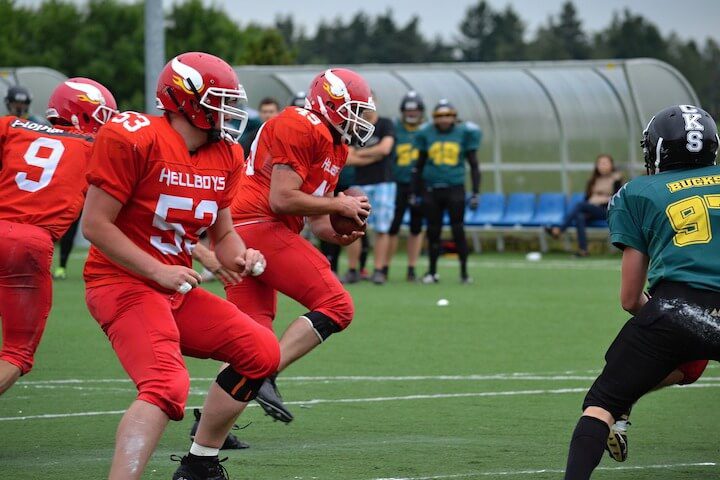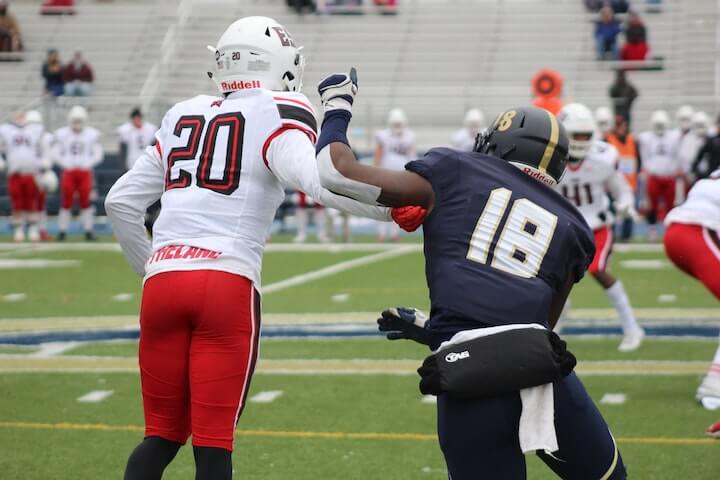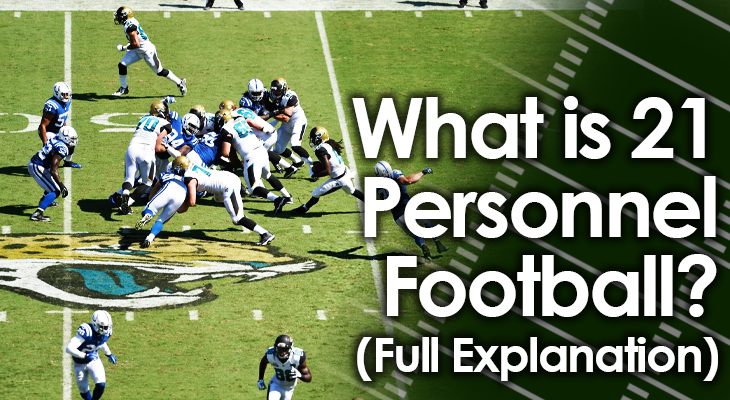Coaches give different offensive alignments different names, based on how many players at each position are on the field.
Doing this simplifies the call so that the defense can quickly recognize the type of offense they'll face, as well as what's most likely to come at them as a result.
These are what's known as "personnel groupings," and one of them is the 21 Personnel.
This grouping isn't used as much as it once was in professional or even collegiate football, even though it's generally referred to as a Pro-Style offense.
That said, 21 Personnel is still a very common offensive alignment in high school and youth football. So it's important to understand it.
Let's take a closer look ay what the 21 Personnel in football is, including how defenses counter this grouping.
What is 21 Personnel in Football?
21 Personnel football refers to a Pro-Style offense.
The way to read the different personnel groupings is this -- the first number refers to the number of running backs on the field, while the second refers to the number of tight ends on the field.
Add in five offensive linemen and one quarterback, and however many players remain from the 11 total players on offense are wide receivers.
This means that in 21 Personnel, there are two running backs, one tight end, and two wide receivers on the field for the upcoming play.
That accounts for five players, with the five offensive linemen and the quarterback bringing the offense's total to 11.
In most cases, one of the running backs on the field will be a fullback while the other will be a running back.
The tight end will most likely line up tight to the offensive line, while the two wide receivers will be the traditional ones -- both outside receivers, with one lining up at the line of scrimmage (LOS) and one just off it.

Aim of 21 Personnel
The name of the game for this alignment is "balance".
There are two wide receivers and two running backs, which helps to balance out the attack quite perfectly.
It usually features one wide receiver on each side of the center, while the fullback shades toward the opposite side of where the tight end lines up.
This gives 21 Personnel as perfect a balance as you can get from left to right on the field.
More than just a physical balance of players, though, it also features a balanced attack.
In other words, teams will usually try to run and pass the ball at a ratio that's pretty evenly split 50-50.
Of course, there are times when an offense might be more run heavy or pass heavy out of 21 Personnel, but the idea is that the alignment allows for both to happen successfully.
To this end, 21 Personnel is used by offensive teams that have a nice combination of size, strength and mobility up front, with wide receivers who are good at catching the ball and blocking as well.
The tight end must also be solid at blocking and catching. Though running backs won't need to catch the ball too much, they have to be ready to do so from time to time.
Also, the fullback will almost exclusively serve as the lead blocker on all running plays, but he may get the occasional carry during short-yardage or goal-line situations.

How to Counter 21 Personnel
With all this balance on offense, defenses will usually counter the 21 Personnel by bringing in a balanced and base alignment of their own.
This means they'll stick to either a 4-3 or 3-4 base alignment and not vary too much from that.
That means they'll either have four defensive linemen and three linebackers, or three defensive linemen and four linebackers.
In both cases, there would be four defensive backs on the field -- two cornerbacks, a free safety and a strong safety.
All that said, the best defense against this alignment is usually the 4-3 alignment.
This is because they'll need the extra bodies up front to go up against both the tight end and fullback blocking on all running plays.
Defenses that run a 3-4 can sometimes get overpowered at the line of scrimmage against this offensive alignment.
However, defenses do have the ability to put extra pressure on the quarterback against the 21 Personnel...
Since there are only two wide receivers on the field, the defense can decide to blitz the safeties, linebackers, and even cornerbacks from time to time, without having to worry about uncovered receivers.
This is a huge aspect to countering the 21 Personnel.
Defenses that are able to blitz successfully -- and bring blitzers from different positions on the field -- are the ones that are most successful against this offensive alignment on a consistent basis.
That isn't to say that defenses must blitz in order to counter 21 Personnel, but it certainly doesn't hurt.
Conclusion
The 21 Personnel in football is an offensive alignment often referred to as a Pro-Style offense.
While this offense used to be employed by almost every professional and collegiate team, it's not as popular at those levels today.
Still, many high school and youth football teams still love to use 21 Personnel.
The main reason is that it's a very balanced offensive alignment, both in terms of the players on the field as well as the ability it gives coaches to equally call rushing and passing plays.
Defenses will usually counter 21 Personnel with a 4-3 or 3-4 base defense, and will try to take advantage of the blitzing opportunities it presents them.

